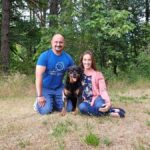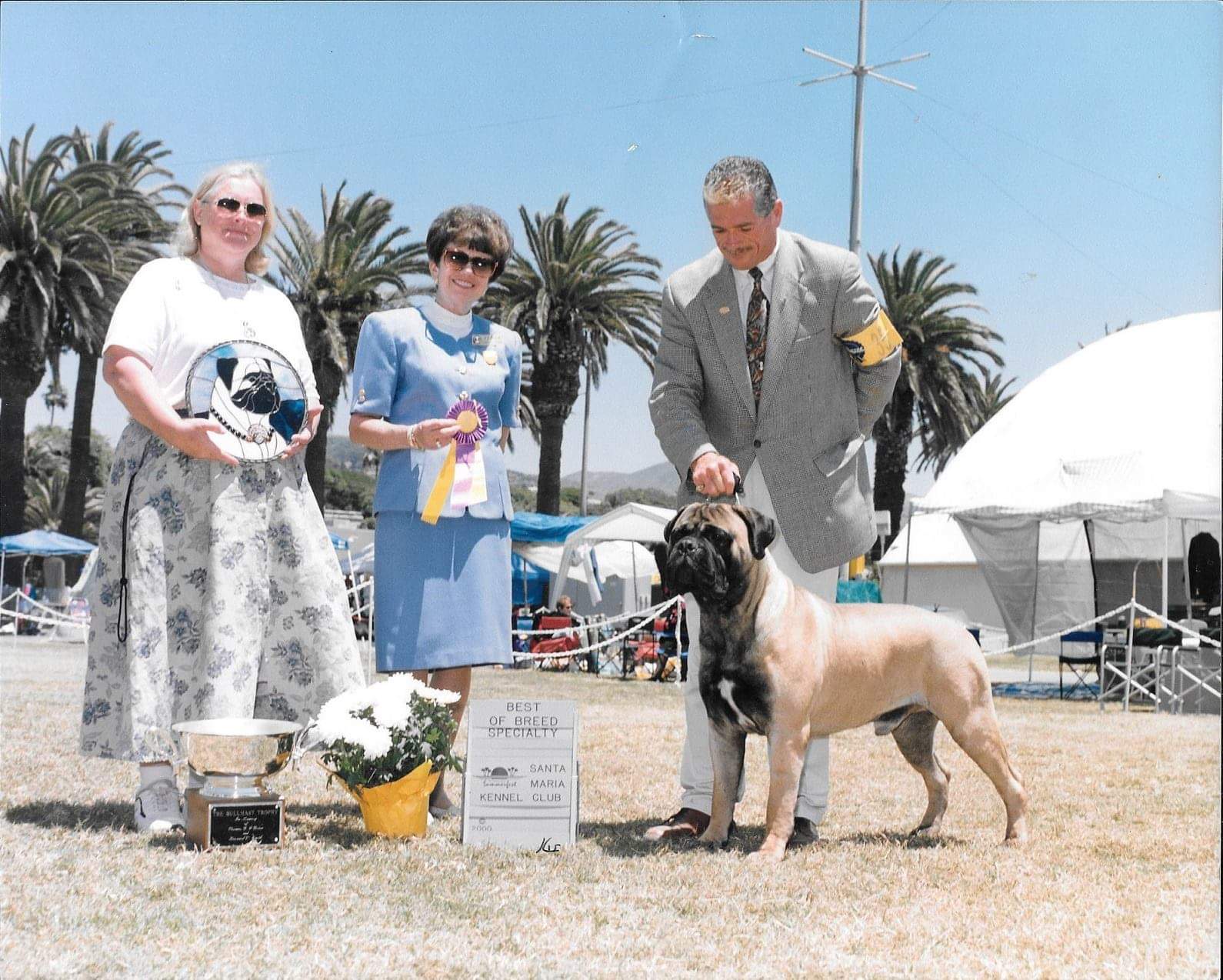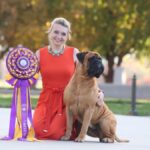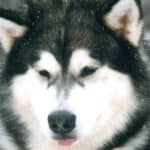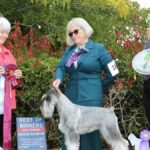The AKC Bullmastiff Breed Standard
The American Kennel Club approved changes to the Bullmastiff Breed Standard, submitted by the American Bullmastiff Association, the parent club for the breed, on February 8, 1992. The amended standard went into effect on March 31, 1992.
Geraldine Shastid, a noted Bullmastiff judge, explains and expands on the points made in the standard. Her comments are in italics in between the pertinent sections of the standard.
AKC Bullmastiff Breed Standard – General Appearance
That of a symmetrical animal, showing great strength, endurance, and alertness; powerfully built but active. The foundation breeding was 60 percent Mastiff and 40 percent Bulldog. The breed was developed in England by gamekeepers for protection against poachers.
This introductory paragraph describes the overall physical impression of the Bullmastiff, the antecedents that gave it a unique type and the purpose for which the breed was intended. In other words, it outlines a strong working dog and emphasizes structure, type, and function. All three of these elements were present in the early Bullmastiff, as they are in Bullmastiffs today.
AKC Bullmastiff Breed Standard – Size, Proportion, Substance
Size
Dogs, 25 to 27 inches at the withers, and 110 to 130 pounds weight. Bitches, 24 to 26 inches at the withers, and 100 to 120 pounds weight. Other things being equal, the more substantial dog within these limits is favored.
Proportion
The length from tip of breastbone to rear of thigh exceeds the height from withers to ground only slightly, resulting in a nearly square appearance.
Not a giant dog, the ideal height of the Bullmastiff has remained generally the same over the years in most written standards. The weight, however, has been increased since the first Bullmastiffs were registered and is now also slightly greater for bitches than the current British standard permits. A premium is put on substance, within the limits of the standard, meaning muscle and bone rather than bulk and fat. This substance should never be at the expense of the required elements of power, endurance, agility, and activity mentioned under General Appearance.
Although not actually one of the square breeds, the ideal Bullmastiff should always have a square appearance. The closer a dog approaches a noticeably rectangular silhouette, the less correct it is on this point—an element that helps to differentiate the breed from the Mastiff. A balanced Bullmastiff should have a deep body that is approximately one half of its total height at the withers.
One should also remember that although width is not mentioned in this part of the standard, to be a “symmetrical” and “powerfully built” Bullmastiff, a dog should possess sufficient width to balance its height and length when viewed from any angle. When viewed from above, the width of the front, the ribs, and the rear should be equal.
Head
- Expression – Keen, alert, and intelligent.
- Eyes – Dark and of medium size.
- Ears – V-shaped and carried close to the cheeks, set on wide and high, level with occiput and cheeks, giving a square appearance to the skull; darker in color than the body and medium in size.
- Skull – Large, with a fair amount of wrinkle when alert; broad, with cheeks well developed. Forehead flat.
- Stop – Moderate.
- Muzzle – Broad and deep; its length, in comparison with that of the entire head, approximately as 1 is to 3. Lack of foreface with nostrils set on top of muzzle is a reversion to the Bulldog and is very undesirable. A dark muzzle is preferable.
- Nose – Black, with nostrils large and broad.
- Flews – Not too pendulous.
- Bite – Preferably level or slightly undershot. Canine teeth large and set wide apart.
The Bullmastiff Breed Standard gives its greatest emphasis to the section on the head for two reasons; because the head is composed of so many individual parts and because a good head identifies the dog as a Bullmastiff rather than a Bulldog, a Boxer or a small Mastiff.
Taken as a whole, the head should have a square appearance, just as should the overall body structure.
One of the characteristics the breed legitimately inherited from its Bulldog ancestors is a broad, shortened skull. The Bullmastiff lacks what is known in other breeds as backskull. This means that the occipital bone on a Bullmastiff is set between the ears, rather than extending to some point behind them, as in the Mastiff. Viewed from the top, the portion of the head from the stop to the occiput should roughly equal the width of the head from cheekbone to cheekbone, but not including the cheek muscles that should also be clearly present on a good representative Bullmastiff head.
For symmetry, the head should be approximately as deep as it is wide, thus forming a padded cube. An old rule of thumb was that the circumference of the head, measured from a point in front of the ears, should be equal to or slightly greater than the height of the dog from ground to withers.
Ideally, the muzzle is to be broad and deep with a length in profile that is one third of the entire head from tip of the nose to the occiput—in other words, one-third muzzle, two-thirds head (skull length). The width of the muzzle should be approximately the same as the length and the depth, forming a padded block that is securely attached to the square head.
Some slight wrinkling across the muzzle may be permitted, but a Bullmastiff should never have so much or so little wrinkle on the forehead that the expression and wrinkle pattern on the head does not change when the dog is alert and comes to full attention. This point is functional as well as aesthetic, because it serves as a form of communication between dog and owner, and has been prized since early gamekeepers’ days.
The dark, medium size eyes are set wide apart to allow a full range of vision and to avoid injury to both, at one time, in a skirmish with man or beast. Cosmetically, they square off the center area of the face and contribute immensely to the keen, alert, and intelligent expression.
The dark, medium size eyes are set wide apart to allow a full range of vision and to avoid injury to both, at one time, in a skirmish with man or beast.
Faults
Few faults are mentioned in the AKC Bullmastiff Breed Standard, so when a particular characteristic is pointed out, it should be carefully noted, “Lack of foreface with nostrils set on top of the muzzle is a reversion to the Bulldog and is very undesirable.” This is not to be confused with a pugnacious chin resulting from an undershot jaw. To differentiate between the two, look at the angle of the nose as it departs from the bridge of the muzzle. In profile, if the front of the nose forms a 45-degree angle with the top line of the nose, it should not generally be considered a reversion to the Bulldog. A far more common nose fault in Bullmastiffs are small or pinched nostrils.
The mouth is broad and the canine teeth set wide to square off the jaw. It has been argued that the level bite is not normally considered functional. In the case of the Bullmastiff, which was developed to knock down and hold a man without mauling or inflicting unnecessary injuries, this type of bite is, indeed, suited to the purpose. The very “inefficiency” of the level or slightly undershot bite allows a person to be held without much of the ripping or slashing often encountered with the scissors or pincer bite found in many of the herding or guarding breeds.
Excessive flews would be a hindrance to a dog attempting to securely hold a struggling felon. Aesthetically, the deep, square lower muzzle should come from strength and depth of underjaw and not from an illusion created by floppy flews.
Ears are V-shaped and darker in color than the body. Although a dog may be forgiven for not possessing black ears, the darker coloring should be preferred by breeders to prevent loss of pigmentation on this point. When alert, the ears come forward slightly and frame the top half of the face. The ears should not be large, but rather in proportion to the head. Well-set ears of correct size and shape greatly enhance the expression and contribute to the overall square look.
Although the AKC standard only remarks that the dark muzzle is preferred, it is probably best for breeders to strive for the black muzzle and masking that is considered essential by the British and Canadian standards. A Bullmastiff with a faded or absent mask departs from accepted breed type for showing or breeding, and ranges uncomfortably close to the coloration of the Dogue de Bordeaux.
The head is, therefore, one of the signature characteristics of type in the Bullmastiff and should never be such that there could be the slightest confusion with the Mastiff, Bulldog, Rhodesian Ridgeback, Dogue de Bordeaux or any other breed.
Neck, Topline, Body
- Neck – Slightly arched, of moderate length, very muscular, and almost equal in circumference to the skull.
- Topline – Straight and level between withers and loin.
- Body – Compact. Chest wide and deep, with ribs well sprung and well set down between the forelegs.
- Back – Short, giving the impression of a well balanced dog.
- Loin – Wide, muscular, and slightly arched, with a fair depth of flank.
- Tail – Set on high, strong at the root, and tapering to the hocks. It may be straight or curved, but never carried hound fashion.
This section of the standard describes a thick, powerful, compact dog that is capable of working. Compactness and a short, level back are the keys to the ideal, well-balanced Bullmastiff body. The tail is set on high and should be an extension of the topline. Low-set tails have become commonplace, as well as equally incorrect rounded croups more appropriate to coursing dogs. A sudden drop in the croup ruins the square outline and weakens the stability needed for the dog to keep its balance when subduing an intruder.
AKC Bullmastiff Breed Standard – Forequarters
- Shoulders – Muscular but not loaded, and slightly sloping.
- Forelegs – Straight, well boned, and set well apart; elbows turned neither in nor out.
- Pasterns – Straight, feet of medium size, with round toes well arched.
- Pads – Thick and tough, nails black.
AKC Bullmastiff Breed Standard – Hindquarters
Broad and muscular, with well developed second thigh denoting power, but not cumbersome. Moderate angulation at hocks. Cowhocks and splay feet are serious faults.
Although these opposite ends of the dog are treated separately in the standard, they must be considered together to achieve the proper balance and symmetry. Shoulders are slightly sloping to go with the strong, straight pasterns and the moderate angulation at the hock. It is reasonable to assume that if the hocks are moderately bent, the stifles will be moderately angulated as well.
Cow hocks and splay feet are designated as serious faults and should not be tolerated. Although splay feet are mentioned under the heading of hindquarters, they are an equally serious fault on the front feet. Similarly, thick, tough pads and black nails are not just requirements on the front feet. The dog is the sum of its parts and the way they fit together.
AKC Bullmastiff Breed Standard – Coat
Short and dense, giving good weather protection.
A short, dense coat is less likely to collect mud and debris and is less exposed to the elements than a longer, slightly open one. The British penalize long, silky, and woolly coats in their standard and require the haircoat to lie flat against the body. The AKC standard simply states what is acceptable and expects common sense to exclude the occasional longhaired Bullmastiff from the show ring and the breeding program.
AKC Bullmastiff Breed Standard – Color
Red, fawn, or brindle. Except for a very small white spot on the chest, white marking is considered a fault.
Although brindle was the color preferred by early gamekeepers, for many years brindle dogs were at a disadvantage in the show ring. But in the past decade, many serious breeders have made concentrated efforts to produce outstanding brindle Bullmastiffs. As a result, they are seen in increasing numbers every year.
Solid fawns and reds should ideally have clear, even-colored coats.
White markings are a fault in all Bullmastiff breed standards and should be penalized to the extent of the marking. A large amount of white is a larger fault, but unless extensive, it should never be considered with the same severity as splayed feet, cowhocks or a reversion to the Bulldog.
Bullmastiff Colors & Markings
| DESCRIPTION |
STANDARD COLOR |
| Fawn |
YES |
| Fawn Brindle |
YES |
| Red |
YES |
| Red Brindle |
YES |
| Red Fawn |
YES |
| Red Fawn Brindle |
YES |
| DESCRIPTION |
STANDARD MARKING |
| Black Markings |
NO |
| Black Mask |
YES |
| Black Mask, White Markings |
NO |
| Fawn Mask |
YES |
Gait
Free, smooth, and powerful. When viewed from the side, reach and drive indicate maximum use of the dog’s moderate angulation. Back remains level and firm. Coming and going, the dog moves in a straight line. Feet tend to converge under the body, without crossing over, as speed increases. There is no twisting in or out at the joints.
The gait described is the simple, correct movement expected from a working dog with moderate angulation and a compact, nearly square body. Occasionally, a Bullmastiff will single track but the breed should not be expected to do so. The single tracking Bullmastiff should not be confused with a dog that crosses over in its movement. This view differs from the current Canadian standard, which asks Bullmastiffs to track in two parallel lines and makes no mention of convergence or single tracking.
Many novice owners mistake speed for good movement. A smooth, moderate trot reveals much more about a dog’s soundness and structure than the racing speed often seen in the show ring. As a judge, I am always skeptical when a dog is presented at what I consider excessive speed.
Although good movement should be prized, it should receive no extra recognition if it comes as a benefit of a fault of type. Specifically, a Bullmastiff should get no extra credit for outstanding movement if it lacks the essential compactness and nearly square outline or if it achieves that exceptional movement as a benefit of incorrect type and structure.
Temperament
Fearless and confident yet docile. The dog combines the reliability, intelligence, and willingness to please required in a dependable family companion and protector.
Fearless and confident yet docile. To put it in very simple terms, a Bullmastiff must own the ground it stands on. Docile means to easily teach or manage, not dull or spiritless.
